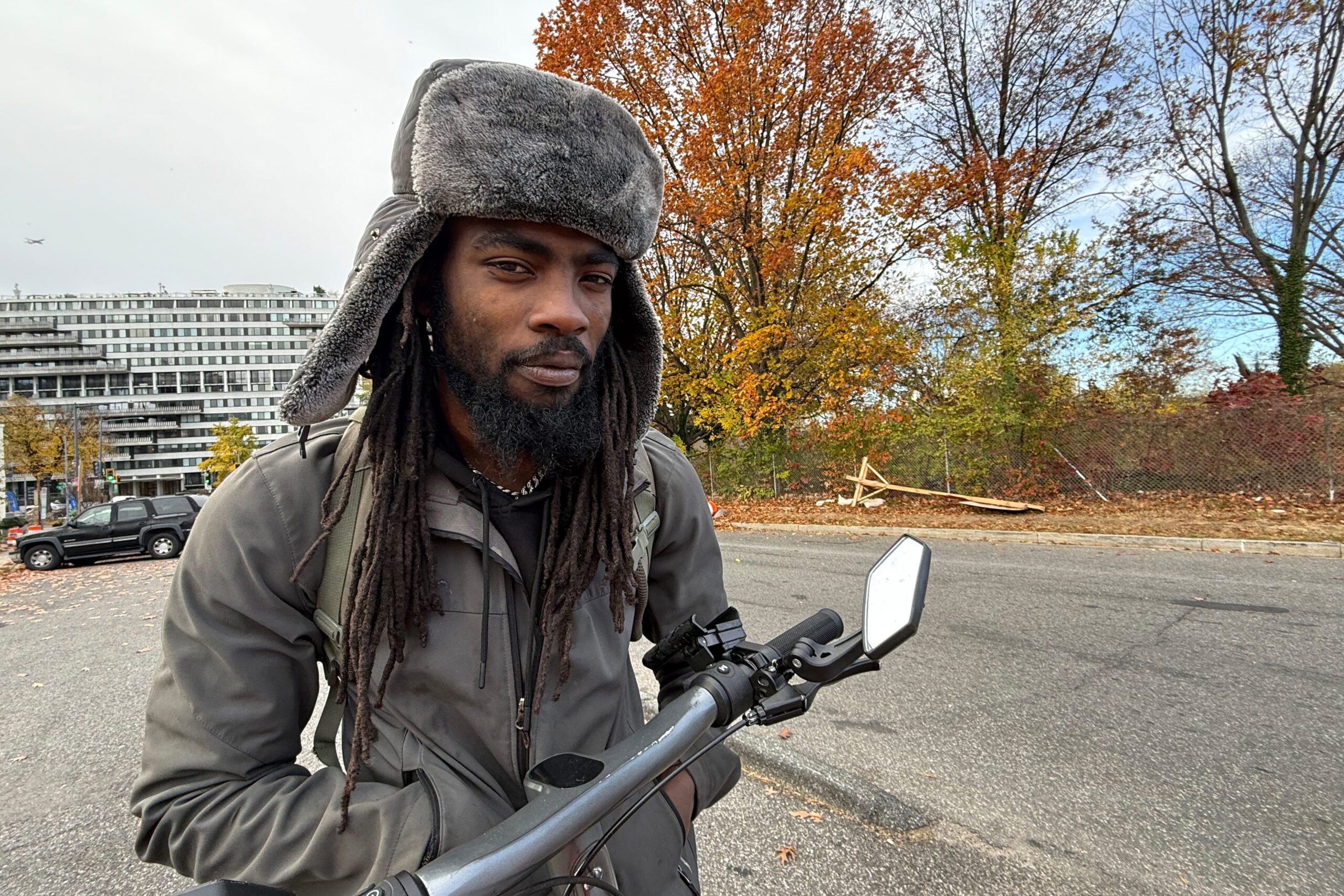BY REBECCA GOULD, LIS KIRKNESS AND CHARLOTTE SQUIRES
Exercise is one of those things that we all know is a good thing overall but can be hard to break into for a variety of reasons, at any age. This is perhaps particularly true for people with Parkinson’s disease as it can be common for people to experience a loss of confidence not only relating to evolving physical symptoms but also due to additional changes in mood and sleep, or walking pattern and speed. These aspects might make it difficult to continue activities that were once enjoyed, and also to start new ones. People might have a range of concerns – will I be able to keep up? Will I be able to finish? What happens if I can’t do it? What happens if someone stares? Is it even worth it, at the end of the day? Perhaps staying home feels like the easier option.
Physical exercise for people with Parkinson’s: everything counts
A new Cochrane Review Physical exercise for people with Parkinson’s disease (published January 2023) has looked at the effect of different physical exercises in people with Parkinson’s. The key findings were that exercise can help movement symptoms and quality of life in people with Parkinson’s, and importantly, lots of different types of exercise were beneficial which means people can choose to do activities they enjoy. Let’s now look at the review in more detail.
In total, the review authors found 156 studies which included almost 8000 people, mainly with mild to moderate symptoms, and looked at lots of different types of physical activity and exercise including dance, water-based exercises (for example, swimming, aqua aerobics), endurance training (for example, cycling, brisk walking) strength training, mind-body training (for example, Tai Chi), walking and balance training and multi-domain training (where people do a combination of different types of exercises).
What are the benefits of physical exercise in people with Parkinson’s?
The review gives us information on the effects of different types of physical activity. It shows that, overall, physical activity improves movement symptoms, quality of life, freezing whilst walking and functional mobility (ability to do day-to-day activities like getting up from a chair) in people with Parkinson’s.
Rebecca (sport and exercise medicine doctor): Physical activity is great for people’s overall health and well-being. It has a role in preventing and treating many long-term conditions such as high blood pressure, diabetes, heart disease, arthritis, depression, and anxiety. You may decide to become more active to help improve your Parkinson’s symptoms but increasing your physical activity will also have a wider benefit to your health.
What types of exercise work best for people with Parkinson’s?
The review found that most types of exercises were effective.
- For movement symptoms:
- Dance was shown to have a moderate beneficial effect
- Water-based training, walking and balance training, and multi-domain training may have a moderate beneficial effect. Strength training may also have a moderate beneficial effect, but the results are uncertain.
- Mind-body training and endurance training may have a small beneficial effect.
- For quality of life:
- Water-based exercises probably have a large beneficial effect
- Endurance training may have a moderate beneficial effect
- Walking and balance training, and multi-domain training may have a small beneficial effect
- Mind-body training may have a moderate benefit, and strength training and dance a small benefit but the results are uncertain
The review authors conclude that as most exercise types were effective, personal choice and the goals the person with Parkinson’s would like to achieve, are important factors in choosing the type of exercise to do.
Charlotte (older persons’ doctor): This review is different to other research studies looking at exercise, as many of those focussed on a particular type of activity for a given condition – and it may not be a type that is easily accessible or available. This review is very positive because it gives people the security of knowing that whatever physical activity they choose and enjoy most, it is likely to be helping their symptoms of Parkinson’s in the long term.
What are the risks of physical exercise in people with Parkinson’s?
Not all the studies included in the review included information on safety and the results are very uncertain. Of the 85 studies that included some type of safety data, 40 reported no adverse events. Adverse events occurred in 28 studies and these were mainly falls during exercise and pain.
However, a separate Cochrane Review Interventions for preventing falls in Parkinson’s disease (published June 2022) found that exercise probably reduces how often people fall overall, and probably slightly reduces the total number of people with mild to moderate Parkinson’s who fall.
How long should I be exercising for?
The authors found that exercise programmes that lasted 12 weeks or longer had a larger benefit than those that lasted less than 12 weeks. Individual exercise sessions varied in length between 15 minutes and two hours.
Rebecca: By choosing exercises that you enjoy and match your goals, it will be easier to add these to your daily or weekly routine, and hopefully they will become something that you are motivated to continue long-term.
Move your way
This review is exciting as it shows that doing any exercise is better than doing nothing when it comes to managing Parkinson’s.
This means people can be confident that whether continuing with a long-held swimming hobby, trying Pilates for the first time, or going for a walk with family or friends, they probably will be having a positive impact on their Parkinson’s as well as other aspects of their health.
Managing a chronic illness such as Parkinson’s can be challenging and sometimes people can feel a loss of control. Knowing that physical activity has been shown to reduce symptoms, and knowing it may also help with harder-to-measure aspects such as stress and confidence, make it an important new tool in the belt of people living with Parkinson’s and their families, alongside the roles for medication, and their specialist team.
Keeping active with Parkinson’s – Lis’ story
At 67, I was reasonably fit and active. A year later, in 2019, I noticed I was walking unevenly and had problems using my left hand, but although I spoke to my GP, Covid meant there were no specialist appointments available. During lockdown, my symptoms worsened though I had no idea what was wrong. I stayed at home and didn’t go out much.
In early 2021, I was referred to a Parkinson’s consultant, who diagnosed me with Probable Idiopathic Parkinson’s Disease. He suggested that keeping active might defer having to start medication. A few days later I received by post, a large folder from the Edinburgh branch of Parkinson’s UK and realised I was not alone, as there’s a whole community of people living with Parkinson’s. I joined the Nordic walking group and Pilates class and initially worried about meeting lots of old shoogly people, who might make me feel depressed – but instead, I found people who had been living with Parkinson’s for years but were still playing golf, or going hillwalking, or dancing regularly.
A few months later, everything still felt slow and stiff and I started Co-Careldopa. I joined a gym and tried “triathlon training” – jogging/walking, stationary cycling and swimming. I also tried neurodynamics and was pleased to see some of my speed and strength measurements improve with time. I was shocked to find that I could no longer swim due to feeling unbalanced and unsafe in the water when I’d previously enjoyed swimming. I eventually decided it was too stressful and stopped.
I feel I now have a well-balanced diary of activities, some specifically for people with Parkinson’s, some not. These include neurodynamics, pilates, nordic walking and recently table tennis; playing with my shoogly left hand has really helped my dexterity, and walking in lovely surroundings with a bunch of people to chat with is great for my morale and my posture. I also do Rock Choir, line dancing and an art class. These all help my movement, coordination and confidence, as I feel that I have some control. They are also all sociable and fun and I now know a large circle of people.
A year on, I can write better, type properly (as a retired secretary I had been aware my typing speed had reduced), walk and move better, and can balance on one leg – which I don’t think I could do before Parkinson’s! I am applying to get my driving licence back.
My personal view of Parkinson’s is that it ‘rusts up my brain cells’ and if I did nothing, things would get worse quickly. I sometimes say that I think there are six weapons in the fight against Parkinson’s – drugs, exercise, diet, Parkinson’s specialists, other people with Parkinson’s, and family. My exercises give me a reason to get up every morning, meet people and do something positive about my health. I’m considering a boxing class next.
Rebecca: Lis’s story shows that for people living with Parkinson’s, it is never too late to become more active. It has not been all smooth sailing, but Lis has been able to try lots of different activities to find ones that she enjoys and is confident doing. It’s great to not only hear how she has benefitted, both physically and psychologically, but that she has also got to meet other people living with Parkinson’s who are benefitting from leading more active lives. As healthcare professionals, it is really nice to be able to say to people that there is evidence that lots of different types of activities can be beneficial in Parkinson’s and they are able to choose what they enjoy most.
Useful links if you are thinking about becoming more active
- Parkinson’s UK – advice on physical activity and search function to find classes local to you
- Physical activity information for people living with long term conditions
- Big, Bold and Balance Exercise video for people living with Parkinson’s
- Physical activity information leaflet for people living with Parkinson’s
- Physical activity information leaflet for people living with later stages of Parkinson’s
This review was discussed on the BBC Radio programme Inside Health, broadcast on 14 March 2023.
Join in the conversation on Twitter with @CochraneUK and @DrRebeccaGould or leave a comment on the blog.
Please note, we cannot give specific medical advice. We do not publish comments that link to individual pages requesting donations or to commercial sites, or appear to endorse commercial products. We welcome diverse views and encourage discussion. However, we ask that comments are respectful. We reserve the right to not publish any we consider offensive. Cochrane UK does not fact check – or endorse – readers’ comments, including any treatments mentioned.
Rebecca, Lis and Charlotte have nothing to disclose.
—
This post was previously published on evidentlycochrane.net and under a Creative Commons license CC BY-ND 4.
***

If you believe in the work we are doing here at The Good Men Project and want a deeper connection with our community, please join us as a Premium Member today.
Premium Members get to view The Good Men Project with NO ADS. Need more info? A complete list of benefits is here.
—
Photo credit: iStockPhoto.com
The post Physical Exercise for People With Parkinson’s: Do What You Enjoy appeared first on The Good Men Project.
Original Article










